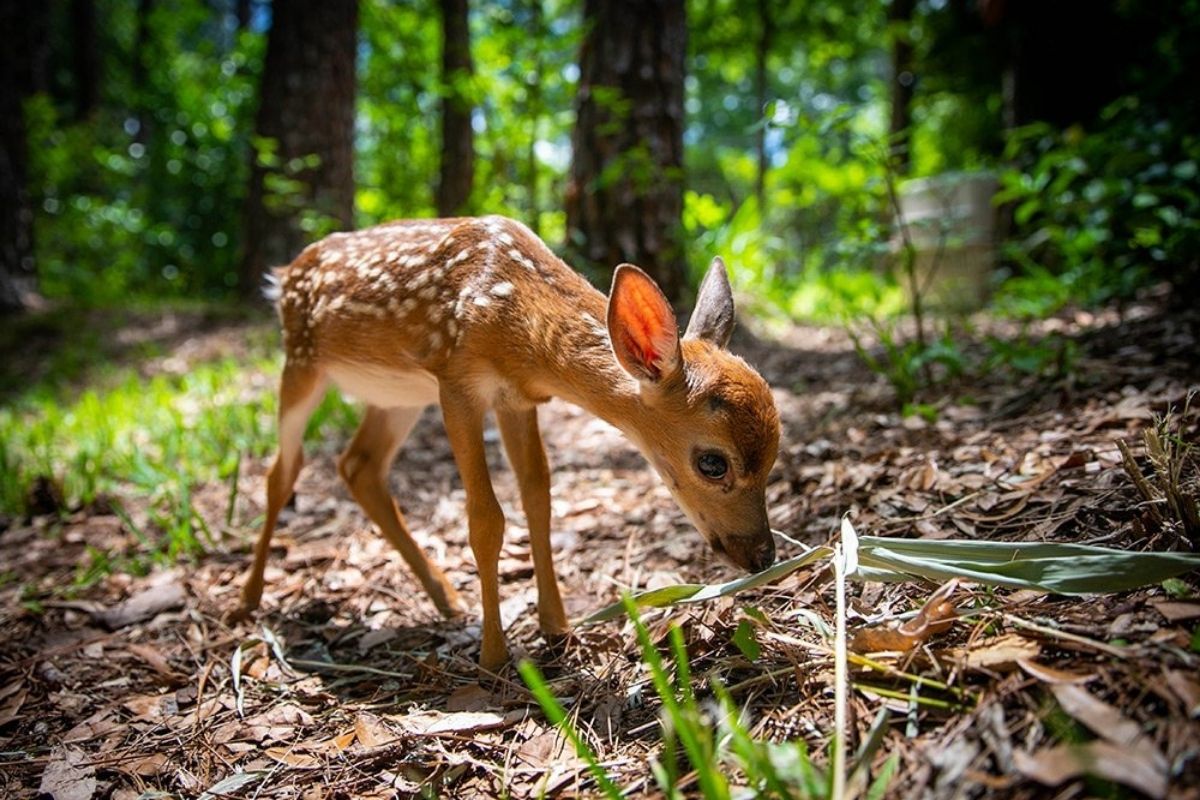Signs that a wild animal is in need and that you should call a wildlife rehabilitator in your community:
- They are clearly injured (e.g., they have a broken wing or leg, they are bleeding, they are unconscious).
- Suffered a severe trauma such as being hit by a car or falling from a high nest;
- Has an open wound with bleeding or swelling;
- Is on the ground unable to move;
- Shows signs of flies, worms or maggots, which look like grains of rice;
- Is a baby and the parents are known dead or separated and cannot be united;
- Is not fully furred or feathered;
- Is very cold, thin or weak;
- Was caught by a cat or dog, even if it seems healthy
Rabbits
Baby bunnies are one of the wild animals rescued most often, according to the National Wildlife Rehabilitators Association, However they usually do not need human help. Mother rabbits are only at the nest to feed their babies twice a day for about five minutes—at dawn and dusk. And, yes, they really did put the nest in the middle of your backyard. One reason for this is so mama rabbit can see any predators that may be approaching while she is nursing her young.
Before mowing your lawn, walk the yard, carefully looking for any signs of a nest to avoid mowing over it. It is vital to keep cats and dogs away from the helpless young rabbits or they will be killed or mangled. If a cat or dog locates a nest, the pet must be removed and kept away from the nest. Cats and dogs will return to the nesting site once they know it exists.
Baby rabbits are in their nest for only two to three weeks; a pretty short time before they are independent. Leave the nest alone unless you find cold, limp babies, or obviously injured ones. Call a local wildlife rehabilitator for more advice on how to keep the young safe in the nest until they are ready to live on their own.
Birds

Many people find young birds hopping around the yard in June and July. If the bird is almost full-sized, fully feathered, but has short or seemingly no tail feathers, that is a fledgling who left the nest before being able to fly. If you find a fledgling, it is best to leave it where it was found. Most of these birds are old enough to leave the nest but are still not efficient fliers. The adults are probably still caring for the young bird, which should be capable of flying within a few days. Remember to keep pets away from the bird and watch it closely for over an hour to see if the adults are returning to feed it.
If you find a young bird on the ground that appears to not have feathers, look for a nest. If a nest is in a nearby tree or shrub and the bird feels warm to the touch, try to place the nestling back into the nest. There is a myth that once a baby bird is touched by a human, it will not be cared for by the parent birds. Not true! First of all, birds, except for those in the vulture family, have poor to no sense of smell. They cannot tell you touched the baby to return it to the nest. However, if you put a cold baby bird back in the nest and it is unable to beg for food when the parent arrives, it is in trouble.
If a nest has fallen on the ground, make a new nest with a wicker basket and some dry grasses and hang the basket with the nestling in it in a nearby tree or shrub. Make sure the basket is not more than a few inches deep because the parents will not jump into something if they are unable to see out of it. Make sure the substitute nest is not so shallow that the babies will fall out. Be sure to watch the nest carefully for at least an hour to see if the adults return to find and feed their nestling.
Call a wildlife rehabilitator in your area if the nestling cannot be returned to his/her original nest or a substitute nest cannot go in place of the original (too high up or limb/tree was cut down); if a parent is found dead; if a nestling is sick, cold or injured; or if a parent has not returned in hours.
Deer
Most wild animals will not abandon their young, but they do leave them alone for long periods of time while looking for food. Fawns, born from April through July, are purposely left alone by their mothers. Female deer, called does, stay away from the fawns to avoid leading predators such as dogs or coyotes to their location. The white-spotted coat camouflages a fawn as it lies motionless in vegetation. Does will return several times each day to move and/or feed their young. You probably will not see the doe at all since she only stays to feed the fawn for just a very few minutes before leaving it alone again.
When to call for help
If the baby is snuggled up to or seems to waiting next to a dead adult female deer, call a licensed wildlife rehabilitator in your area for help.
If the baby is sick, lying flat out with legs splayed away from his/her body and unresponsive, exhibiting life-threatening injuries after an attack or other trauma (being hit by a car), call a wildlife rehabilitator for help.
If the baby is wandering around crying and constantly vocalizing (sounding like a sheep) all day, contact a wildlife rehabilitator for assistance.

